DIY Homemade Yogurt {New and Improved + Updated Tutorial}
Check out this post, complete with a step-by-step guide, on making your own foolproof, delicious, creamy homemade yogurt. You won’t believe how simple it is!
Have you made their own yogurt since I posted this DIY homemade yogurt method two years ago?
I know many of you have been making it much longer than even that, but back then, it was my first foray into homemade yogurt.
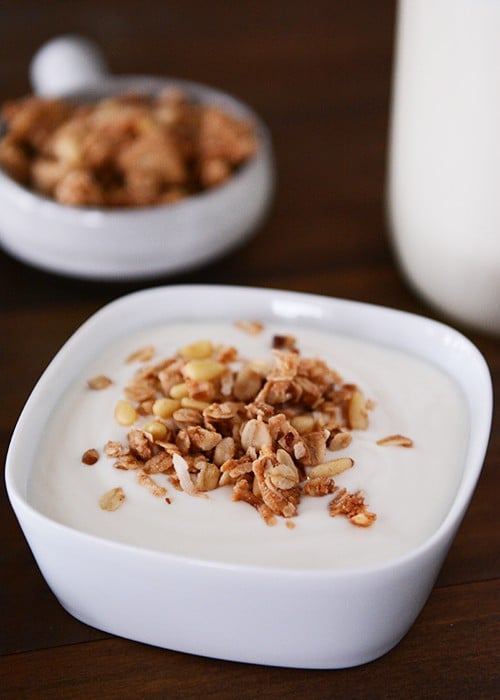
I’m excited to report we’ve been religiously making and eating it for the last two years and are happier humans because of it. (Actually, that’s probably not the case since someone still usually ends up in timeout – sadly, not me – at least 14 times a day so perhaps homemade yogurt really isn’t the cure-all for toddler tantrums and brotherly mishaps. I’ll get back to you on the scientific research behind that claim.)
By virtue of making it at least 3X a month for the last two years, my process has changed a bit since the original post.
If anything, I’ve streamlined my method a bit – it’s faster and easier and less work.
The slow cooker is still a great way if you want a hands off approach, but if time is at a premium and you want to finish the process all in one day, I’m here for you.
Not only have I changed up the cooking method – but also the straining and incubating tools.
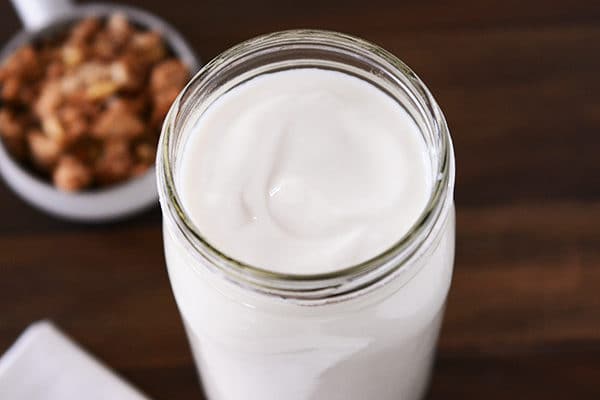
So let’s talk for a second about a few things you need for this really simple yogurt-making process:
Milk: I alternate between 2% and whole milk (sometimes a combination of both). I haven’t used fat-free milk or milk alternatives (like almond, coconut, soy, etc.) but there are several comments on the thread of the original post with feedback on using those types of milk. I generally only do a gallon of milk at a time. Depending on the fat content, and even brand, as well as how long it’s strained, I get about 3 quarts of yogurt from one gallon of milk.
Yogurt Starter: Plain yogurt, Greek yogurt, vanilla yogurt – all different types of yogurts can be used for the starter, but I would probably stay away from fruit-based yogurts especially those with real fruit pieces. The most important feature is that the yogurt must have active cultures so look at the ingredient list to make sure it includes Lactobacillus bulgaricus and Streptococcus thermophilus. Once you start making yogurt, the homemade yogurt can be used as the starter.
Sweetener (optional): Because we eat most of the yogurt for snacks, breakfast, etc., I almost always sweeten it and add vanilla extract during the process (and then once a month I’ll do a plain batch to use for cooking/recipes and if we want to eat it, we’ll add a low-sugar jam or fruit syrup). If you want to exclusively use it for plain yogurt or a sour cream substitute or just want to sweeten it as you eat it, you may not want to add sweetener during the cooking/culturing process. I use agave nectar (for no real reason except I like how it tastes and it’s a little lower on the glycemic index) to sweeten ours but you could definitely play around with sweetener (sugar, honey, etc.).
Thermometer: An instant-read thermometer is pretty crucial to yogurt making – the good news is that they aren’t terribly expensive + you can use them for so many things (like getting your pork tenderloin to come out as juicy and tender as can be). I can highly recommend the one I have – a Thermapen (don’t faint, it is on the pricey end even though I just claimed you can get them inexpensively; Brian gave it to me for Mother’s Day several years ago and it’s the only kind I’ve ever used and I love it very much) or I have several friends that have recently purchased this less expensive brand of thermometer (still with excellent reviews). It’s really important to heat the milk to 180 degrees F during the first step and then let it cool to between 110-120 (where it will need to stay in that range throughout the incubation period) and those are hard things to judge just by dipping your finger in the milk.
Straining Mechanism: Gosh, that sounds technical. But really, all I mean is you need a way to strain the yogurt. I used to line a colander with cheesecloth or coffee filters (word has it that some restaurant supply stores have oversized coffee filters which would be really handy). But after my friend Deb told me she uses these nut milk bags (usually for making almond milk) to strain her yogurt, I decided to try and I’m hooked. They are reusable and wash up really easily plus they strain the yogurt much faster. So instead of it straining for a couple hours in a colander with cheesecloth, I only strain it for 20-30 minutes using the nut milk bag. I have two of the bags and can fit about 3 quarts of yogurt in each one. They are inexpensive and well worth it in my opinion (plus, as I mentioned earlier this week, I use them for wringing out zucchini which has also revolutionized my abhorrence of that task).
Jars/Lids: Quart-sized canning jars (I prefer the wide mouth ones but either will work) are perfect for making yogurt but you can really use any type of container that has a lid and will fit in the cooler you use for the long incubation period. I also really, really love the plastic lids just for canning jars so I’m not messing with a lid and a ring. I bought several boxes of these lids just for yogurt making and use them all the time when I pull jars of jams and syrups and peaches off my shelves.
Cooler: Instead of using the oven all day or night long (with the light on) to keep the yogurt warm, I’ve switched to using a cooler. I’m pretty sure several of you mentioned this method in the original yogurt post so thanks for the brilliant idea! I have a 13-year old cooler (it was a wedding present over a decade ago) that is the perfect size. You don’t need anything fancy – just a well insulated, not super big cooler. I can easily fit six quart jars in the cooler and the lid closes tightly. I fill it up with hot water (using that valuable thermometer to dip in the water and make sure it reads between 110-120 degrees) – all the way to the neck of the jars, close the lid, and let it rest in a warm/non-drafty spot for 8-12 hours.
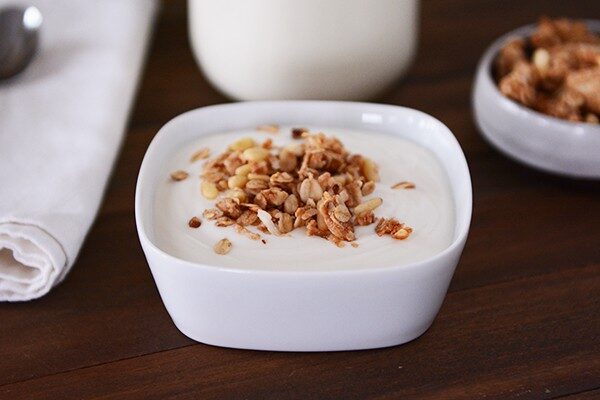
A couple other quick notes: I don’t add powdered dry milk to my yogurt anymore and haven’t for a long time but you can do so if you want a little extra protein.
Also, if I start the process around 8 a.m., I can have the yogurt made, cultured and strained by the time I go to bed. And the dreamy thing is that for 9 or so hours of that day, I’m not doing a thing but sitting there watching a closed cooler do it’s work.
Phew! I think that’s it. If you have questions, feel free to leave them in the comments section. The notes below the recipe title have additional information as well as the picture tutorial so read through those, too.
There are not many breakfasts I look forward to more than a bowl full of creamy, thick homemade yogurt topped with a smidgeon (a large smidgeon) of granola.
Thankfully, as long as time is in your favor, homemade yogurt is simple and totally stress-free.
One Year Ago: Slow Cooker Beef and Barley Soup
Two Years Ago: Honey Lime Tilapia
Three Years Ago: Macaroni Grill Rosemary Bread

DIY Homemade Yogurt {New and Improved + Updated Tutorial}
Ingredients
- 1 gallon milk
- ½ cup plain yogurt with live and active cultures, look at the ingredient list to make sure it includes Lactobacillus bulgaricus and Streptococcus thermophilus
Instructions
- Heat the milk on the stove over medium heat to 180 degrees F. Stir often to prevent scorching on the bottom.
- Remove from the heat and stir in any sweetener or extracts, if using (see note above).
- Let the milk cool until between 110-120 degrees. I prefer catching it at the higher end of that range (around 119 degrees) since it will cool after you add the yogurt starter and it needs to be between 110-120 to culture properly.
- Measure out the yogurt starter in a liquid measure or bowl. Slowly whisk in a couple ladlefuls of the warm milk until it is smooth.
- Add the yogurt starter to the pot of warm milk and stir until it is thoroughly incorporated into the milk.
- Ladle the yogurt into quart-sized jars (a funnel helps!) and cover with a lid/ring or with a white plastic cap.
- Place the jars in an insulated cooler. Fill with hot water most of the way up to the neck of the jars. I like to take the temperature of the water to make sure it is within that 110-120 degree range. Too hot and the yogurt won’t thicken (same if it is too cool). Add warmer or cooler water as needed.
- Close the cooler and place in a warm/non-drafty spot. Let the yogurt rest for 8-12 hours until thick and set.
- Using a nut milk bag or a colander lined with cheesecloth or coffee filters, strain the yogurt. You might need to spoon it out into the nut bag or colander vs. pouring, depending on how thick it is. I use the nut bag and tie it to a knob on my kitchen cabinets, letting the whey drip into a pot or bowl (I have two nut bags and put about 3 quarts of yogurt in each bag) – it strains much faster than cheesecloth; I let it strain 20-30 minutes. The colander with cheesecloth/coffee filters can be placed over a large pot or bowl and refrigerated to strain a couple hours. The total straining time will really depend on how thick you want the yogurt so watch closely. If it strains too thick, simply whisk in a little of the whey (or milk).
- After straining, scrape the yogurt into a bowl and whisk until smooth and creamy. Spoon the yogurt back into clean jars, cover and refrigerate. It will thicken even more as it chills.
- The yogurt should keep 1-2 weeks in the refrigerator (using well-sanitized jars helps it keep longer, as well as using milk that isn’t close to expiring).
Notes
Recommended Products
Recipe Source: from Mel’s Kitchen Cafe (updated from this original post)


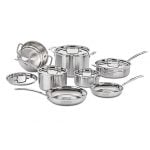
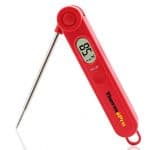
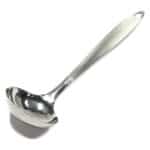



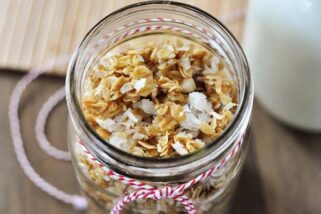
have you ever used the instant pot to make your yogurt? I want to try!
Yes, it works great!
I have a yogurt question that I don’t see the answer to on here and I can’t find the place to leave a comment. My question is, the place I work makes their own yogurt and I have taken over the yogurt making (reluctantly). They way they do it is add the honey and vanilla at the very end, after straining. However, the yogurt always turns out runny, even though it is thick before adding the honey and vanilla. Is that the problem? It shouldn’t be mixed after straining? It makes sense, but just want to confirm before I start messing with the recipe. Any help would be greatly appreciated!
I’m not entirely sure, but I do think that could be a factor in why the yogurt is runny. Usually when I add in ingredients after it is strained, it liquifies a bit.
I made this today and it went really well. I started it late last night then finished it up in the afternoon. The only thing I did differently was I skipped the cooler and used my sous vide. I set it for 115° and left it for 12 hours. It was perfect! Now I’m gonna make some whey ciabatta with the liquid!
Thanks so much – I am new to making homemade yogurt and have now made 4 batches- 2 plain, 2 vanilla and all delicious! I did further simplify and the yogurt continues to come out great:
1- I don’t strain – just pour into my large 2Qt glass jar (only fills 1/2 of it but that’s fine – it was the only large jar I had)
2- I turn on my oven to 150 degrees F for a few minutes while I’m waiting for the milk to cool down and then turn off the oven. By the time I am ready to put the jar in there the oven is lukewarm. I wrap the jar in a dishtowel first.
3. I have an old digital candy thernometer I use so I know exactly when the milk hits the high and low temps- if I had a way to program it to signal when I hit each temp that would make the process so much easier!
Does the water in the cooler have to stay at 110-120 degrees the entire time? I didn’t think it did, but the temp of mine 3 hours in has dropped significantly and the yogurt has not thinned at all. It is covered, but I’m wondering if I should’ve used a cooler like the one you had pictured. I just couldn’t reach it easily, so I grabbed my styrofoam cooler since that was more accessible.
Hi Barbara – yes, the water will need to say in that temperature range in order to properly culture the yogurt.
If I wanted to make a fruit flavored yogurt would I add the fruit with the sweetner?
I usually stir in fruit syrup or puree after the yogurt has cultured but you could try that.
I just made yogurt for the first time this weekend and it was easy and delicious! I really appreciate your detailed instructions and pictures and am positive I’ll be making it weekly. I had to cut my daughter off after three bowls today! I must have been overly enthusiastic because after I told my mom about my yogurt accomplishments she called to tell me she was making her own batch 🙂
I was also going to tell you that I bought the nut milk bag you recommended and used it to strain chokecherry juice when I canned jelly today. That bag worked perfectly. I used Pomonas Pectin and am very pleased just looking at those adorable reduced-sugar jars. I honestly have no idea where I’d be without you and your blog!!!
You are a rock star, Nancy! So proud of you!
Just used your tutorial for my very first batch of homemade yogurt. Great instructions & tips! I’m hooked. Adios pricey store bought yogurt
Thank you for sharing!
Way to go!
Have you ever made yogurt in the Instant Pot?
Yes! But I guess I’m a creature of habit, because I still prefer my old homemade method.
What is the minimum time the yogurt HAS to incubate? Have you always done 8 hours?
Yes, I’ve always done 8-10 hours but you can do less as long as it thickens well. My friend incubates hers about 6 hours.
I tried the method suggested by one reader to heat the milk in quart canning jars in a water bath on the stove, then process the jars in a cooler lined with a fleece blanket and two additional jars of 110^-120^ water. Worked like a charm! The milk heated up faster without the worry of scorching, and clean up was a breeze!
I’ve made the yogurt a few times since you originally posted, and I’m super close to saving enough for an instant pot, and I’ve seen that it has a yogurt setting, so I’m wondering if you’ve ever made it in there…
I’ve made it a few times in the InstantPot but maybe I’m just a stick in the mud, but I still prefer my tried-and-true way. However, I know a lot of people that LOVE making yogurt in their IP.
I realize this post is a couple years old but I thought I might answer someone else’s question also.
I make mine in the Instant Pot every week, I love it! So easy & has convinced my hubby to love yogurt too. My recipe is pretty much exactly like Mel’s just using the IP. Make sure you buy the IP with the yogurt function tho, the LUX model doesn’t have the yogurt button!
Completely new to yogurt making and was sent here by my sister who’s been following you for some time now – and now I’m also turning to your recipes. 🙂
Quick question, can I cool the milk in a cold water bath to expedite the cooling process before adding the starter? I’ve done it for candy making, but not sure if I can do it for yogurt.
Yes, definitely! The key is just not letting it cool down below the 110-120 range (optimally, keep it right at 120 since it will cool down a bit more when adding the starter).
Thank you! I’ll do it next time to cut back on time.
My very first batch of yogurt turned out quite well. I’m using straining clothes tied like a bag and hanging from my cupboards, like you do with your nut bags. It worked great! (NNTR)
Hi Mel, I made yogurt for the first time last week and thought I’d died and gone to heaven!! Quick question for you, after letting my yogurt culture for 11 hours it was still a bit on the runny side, not as thick as your pictures. I incubated mine in a cooler with hot water to 120, but when I opened the lid after 11 hours the cooler water was only luke warm. Could that be the problem? Should I add more hot water during the incubation? Does it need to stay between 110-120 the entire time? After staining through the nut bag I had nearly 6 cups of whey. I only use whole milk. I was reading your granola post where you mention making yogurt and you say when using whole milk you never strain! I was surprised and can’t imagine mine being runny. But maybe you can tell me where I went wrong? Thanks Mel!
Hi Jennifer, yeah, that sounds like too much whey for the end product. It is important for the water in the cooler to stay between 110-120 the entire incubation time. You can wrap the cooler in towels to help this (especially since all coolers will insulate a bit differently – the towels add another layer of insulation) or just check periodically and add hot water as needed. Hope that helps!
Have you ever made yogurt with non homogenized milk? I usually buy that for our drinking milk, but I don’t want to ruin a whole gallon of milk if it wont work for yogurt. Thanks!
I haven’t, Katie – have you tried googling to see if it can be done?
Have you tried using your InstaPot to make yogurt? I thought I’d check for words of wisdom from you before I tried it… :). Also- thank you for bringing nut milk bags into my life! What a huge improvement over expensive, messy cheesecloth. I find a new use for them all the time. Yesterday I used one to strain honey. I keep bees and had some honeycomb that broke out of a frame while I was moving some equipment. I crushed it in my nut milk bag, hung it to drain the honey, dumped the wax (and bits) into a ziploc to render later and the bag washed out perfectly. I was pleasantly surprised- I thought the wax might wreck it, but nope. Awesome!
Seriously? That’s amazing about the honey! And I’m totally intrigued by your beekeeping. I’ve been tempted to dive into that for years (on a very small, backyard scale) because the issues surrounding honey bees are really important to me. About the InstantPot, I have made yogurt in it twice but to be honest, I still prefer my stovetop method. I guess in this respect, it’s hard to teach this girl new tricks. 🙂
I prefer “regular” yogurt to the thick “Greek” style stuff. If I want that runnier texture, do I still need to strain the yogurt at all, or will it be way too runny?
You might try not straining and see how you like the texture. If it’s too runny you could always strain it for a few minutes (even if it’s been chilled).
Thanks!
I’ve been eyeing this recipe for months, but haven’t made it for lack of a thermometer. My mother-in-law just got me a Thermapen as an early birthday present. That thermometer is life changing! I can’t wait to try making yogurt with it!
So, I started making yogurt in January after reading your first post on DIY yogurt. I had read some of your hints at things you had changed up before you posted this, and I had arrived at almost the exact same method you posted here – I think I figured out the nut milk bag a few days before you posted it! But I thought I’d let you know of my current method (only slightly different) but it has made it even easier for me! My least favorite part about the whole process is ladling the hot milk into the jars. I’m very impatient, and so I usually make a big mess of it, dripping milk as I go. Then I read about heating the milk in the mason jars to begin with. Brilliant! I get out my big canning stock pot, fill it with water, stick the mason jars (already filled with the milk) in there (not lids on the mason jars), put the lid on the pot, and turn on the heat. I don’t have to stir it or anything, and I just check the temp now and again, until it’s hit the magic 180 degrees. Then I plop them out on my counter to cool. It takes about an hour to 90 minutes for them to reach the right temp. I stir in about 2 tablespoons of starter into each jar, and throw them in my dehydrator (my new kitchen toy) to incubate. SO EASY! No dishes, no ladling, no stirring. Now I can make yogurt in my sleep!
Is it fine if I’m putting my yogurt back into the original bottles and putting them in the fridge? It seems fine to do, right? Also, I only ever get 2 quarts out of the 2 % milk. I’ve only let it go 8 hours so far. Should I be letting it go longer? My yogurts still a little grainy too. Any idea why?
It might continue to be grainy with the 2% milk – it’s an extra step but blending it will get rid of most of the graininess. I usually put the yogurt back in new jars only because I think it lasts longer in the fridge that way (vs using bottles that haven’t been washed in hot, sterilizing water). Although if you are eating through the yogurt quickly, it’s probably not an issue.
I tried blending my skim one and it ended up being really thin, I’ll try it though because the graininess does bug be a little. I usually let my yogurt sit 8 hours and I get 2 full quarts. Would I get more yogurt if I let it sit longer? My kids will eat a whole Bottle of this for breakfast so I really wish I was getting the 3 quarts that you do.
It’s a possibility you might get more yogurt if you let it sit longer – but also, how long are you straining it for (at all?). If you are straining it, try for a bit less time. It will make the yogurt slightly runnier but you’ll get more.
I did it! I did it! I did it! I am so excited – I just made homemade yogurt!! And it is so delicious. This homemade yogurt is so much better than store brought. I would never have believed it since I love store brought yogurt so much. I read your post of a few years ago and it was way too complicated and time consuming for me. When I read this post (seriously about 10 times through), I decided I was going to try this easier, less time consuming method. The tutorials were such a blessing. I used 1% milk and my yogurt is thick and creamy. I used the nifty recommended nut milk bag too. Thank you so much Mel for the confidence and courage you instill in your blog followers with yours words of encouragement, exceptional tutorials and precise instructions that produce great success when we try. I can’t believe I just made DIY yogurt. You rock and now I do too! 🙂 So happy.
I’m so happy for you, Sheila! Is it weird/lame/nerdy that I was nearly dancing around my living room after reading your comment shouting “Yippee!” You DO rock!
So love your inner spirit, Mel! 🙂
Ok. So I tried to make this yogurt and somehow managed to fail completely. I have slimy milk at best. Is there anything I can do remedy this, or do have to find a different use for this batch and start over again?
I’m not really sure, Ronna – what do you mean by slimy milk? Did it not set up thick?
hey Mel! So, I’ve been making homemade yogurt for a while now and I got super excited when you posted about the nut bags–they sounded amazing! So I quickly ordered mine and made some new yogurt to try them out right away. Well…is your whey that strains out mixed with milk solids? Before when I made yogurt I would strain it through a piece of muslin and the whey was always yellowy and see-through. I’ve tried it a couple times with the nut bags now and the whey comes out very milky. Is that what yours does? Or am I doing something wrong? I just want to know if it is normal 🙂 I do use the milky whey though, and it is way better in recipes then the see-through whey (if that makes sense). Thanks!
Hi Katie – good question. When I strain my yogurt through the nut milk bags it is yellowish clear. There are a few milky parts that get through at the beginning but after that it’s mostly clear whey. What’s the consistency of your yogurt? Thick or fairly thin?
I figured it out! My yogurt was a lot thinner than usual, but I couldn’t figure out why. Turns out my thermometer had gone crazy and wasn’t working any more, I don’t think my yogurt got warm enough in the first place. I got a new one (thanks for the suggestions!) and now my nut bags are working fantastic! Thanks!
Ok so, I made this three times and each time it has gotten runnier. This third time, not much was left in the milk bag so I put it back in the jars and back into the 110-120 degree water. The only difference I can think of is that I got in a hurry for the 180 degree milk to cool to 120. I put the pot in a sink of cold water and stirred it till it was 120. Is it important for the milk to cool slowly? Is it also important to warm it to 180 slowly? or can I put the burner on high as long as it doesn’t stick because I’m stirring it. Is this batch save-able? I guess I am impatient even though this is the quicker version of the recipe.
What are you using for the yogurt starter? It might be that if you are using the homemade yogurt as a starter, you need to get some from the store to give the yogurt a little more oomph. I don’t think cooling it quickly or heating it quickly makes a difference as long as the temperatures are maintained.
I’m intrigued about using whey as a buttermilk substitute, do you sub it 1:1? In some recipes but not others? I always save it and use it when making bread (sub it for about half of the water in the recipe) and I freeze it in ice cube trays for smoothies (and once I even rinsed my hair with it… one of the gems I found when googling what to do with the whey), but that’s about it. I know I can google it but I’m curious to hear more from you about it – for buttermilk and otherwise.
Hey Stephanie – yep, I usually use it 1:1 for buttermilk. I’ve mostly used it in waffles and pancakes and only occasionally in muffins and such but so far it seems to work great.
I’ve been making yogurt since your first post, but I’m excited about this method because 1) with the original method it was often hard to choose a day I knew I’d be home in the evening when the yogurt in the crockpot was ready for me and 2) I don’t like cleaning my crockpot.
I attempted the blanket/rice bag method too. Specifically, I put the jars into an insulated bag with a rice bag on top. Put that bag inside my cooler, put a rice bag on top of the cooler then wrapped it in a big fleece blanket. That all sounds really ridiculous now that I’m typing it:) It’s possible I didn’t need all of those components, but I’m really happy to report it worked well and I REALLY like that I’m not dealing with needing to heat additional water to put in the cooler around the jars.
In case this is helpful to anyone else, it took about 25 minutes to heat my milk to 180 degrees then about 45 to cool it to 120. I needed an additional 10 or so to get the yogurt starter mixed in, the milk into jars, and then the craziness with the rice bags and the cooler wrapping. SO now I know I need a morning where I have about an hr and half to do the process. Not too bad. I put off trying the stove/cooler/daytime method because I didn’t know how much time I needed to dedicate to it. Mel, chime in if that’s totally not the timing you experience.
I am in LOVE with your updated/easier method! I have made yogurt off and on for years using my mom’s old (30+ years) Salton yogurt maker with individual jars. While that worked it wasn’t the best because each 6 oz jar when strained only produced about 1/4 to 1/3 cup of yogurt. I have used this method two times now and couldn’t be happier. I have also been making your fruit syrup from your original yogurt post. I made a couple different kinds for variety then froze in cubes and I throw one of those in the individual serving containers for my husband to take to work. Thanks for all your great recipes!